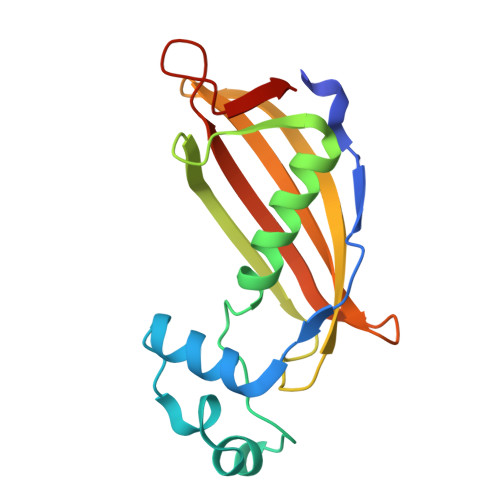1,3-Diarylpyrazolyl-acylsulfonamides Target HadAB/BC Complex in Mycobacterium tuberculosis .
Singh, V., Grzegorzewicz, A.E., Fienberg, S., Muller, R., Khonde, L.P., Sanz, O., Alfonso, S., Urones, B., Drewes, G., Bantscheff, M., Ghidelli-Disse, S., Ioerger, T.R., Angala, B., Liu, J., Lee, R.E., Sacchettini, J.C., Krieger, I.V., Jackson, M., Chibale, K., Ghorpade, S.R.(2022) ACS Infect Dis 8: 2315-2326
- PubMed: 36325756
- DOI: https://doi.org/10.1021/acsinfecdis.2c00392
- Primary Citation of Related Structures:
7SVT - PubMed Abstract:
Alternative mode-of-inhibition of clinically validated targets is an effective strategy for circumventing existing clinical drug resistance. Herein, we report 1,3-diarylpyrazolyl-acylsulfonamides as potent inhibitors of HadAB/BC, a 3-hydroxyl-ACP dehydratase complex required to iteratively elongate the meromycolate chain of mycolic acids in Mycobacterium tuberculosis ( Mtb ). Mutations in compound 1 -resistant Mtb mutants mapped to HadC (Rv0637; K157R), while chemoproteomics confirmed the compound's binding to HadA (Rv0635), HadB (Rv0636), and HadC. The compounds effectively inhibited the HadAB and HadBC enzyme activities and affected mycolic acid biosynthesis in Mtb , in a concentration-dependent manner. Unlike known 3-hydroxyl-ACP dehydratase complex inhibitors of clinical significance, isoxyl and thioacetazone, 1,3-diarylpyrazolyl-acylsulfonamides did not require activation by EthA and thus are not liable to EthA-mediated resistance. Further, the crystal structure of a key compound in a complex with Mtb HadAB revealed unique binding interactions within the active site of HadAB, providing a useful tool for further structure-based optimization of the series.
- Drug Discovery and Development Centre (H3D), University of Cape Town, Rondebosch7701, South Africa.
Organizational Affiliation:





















